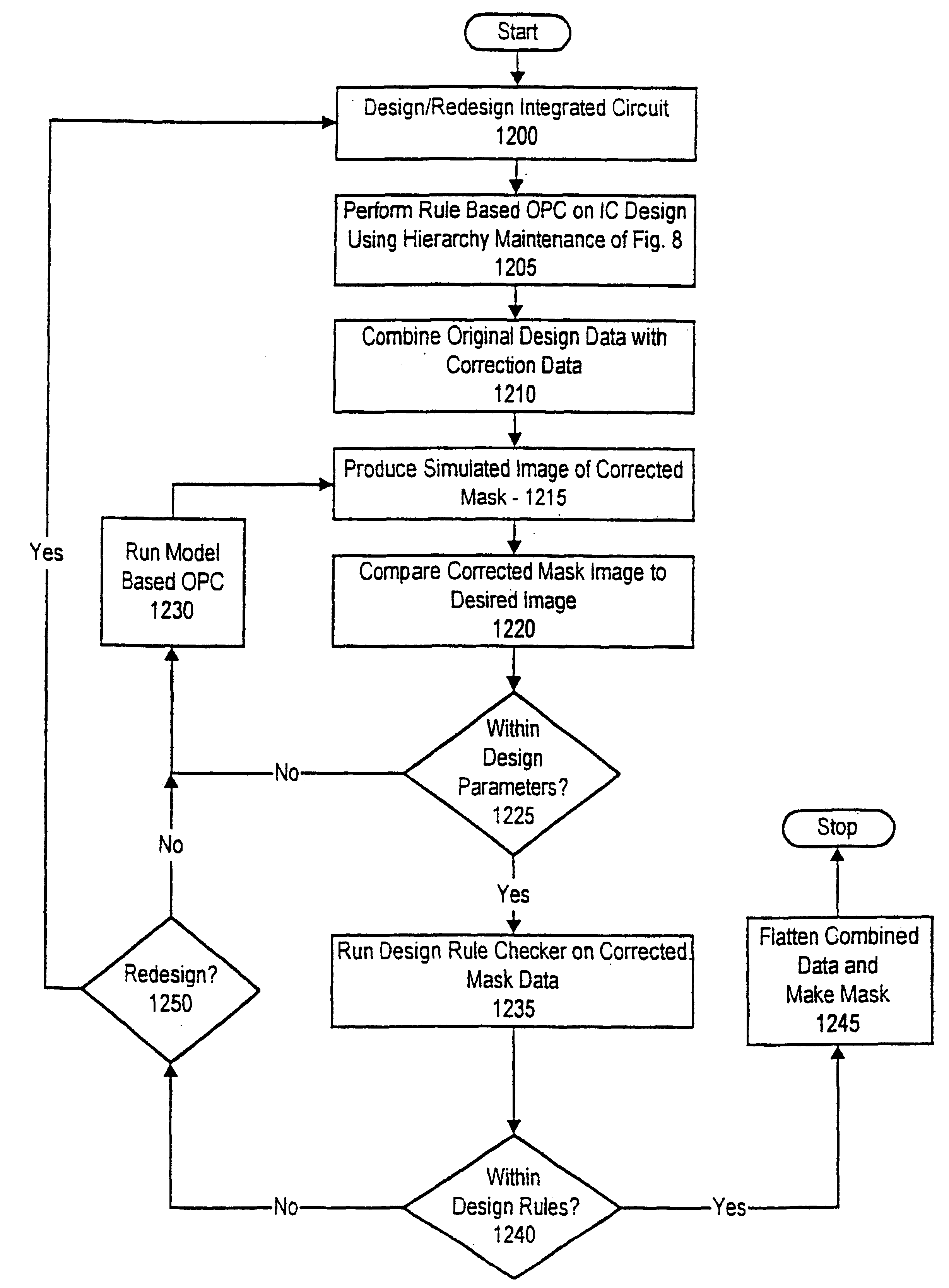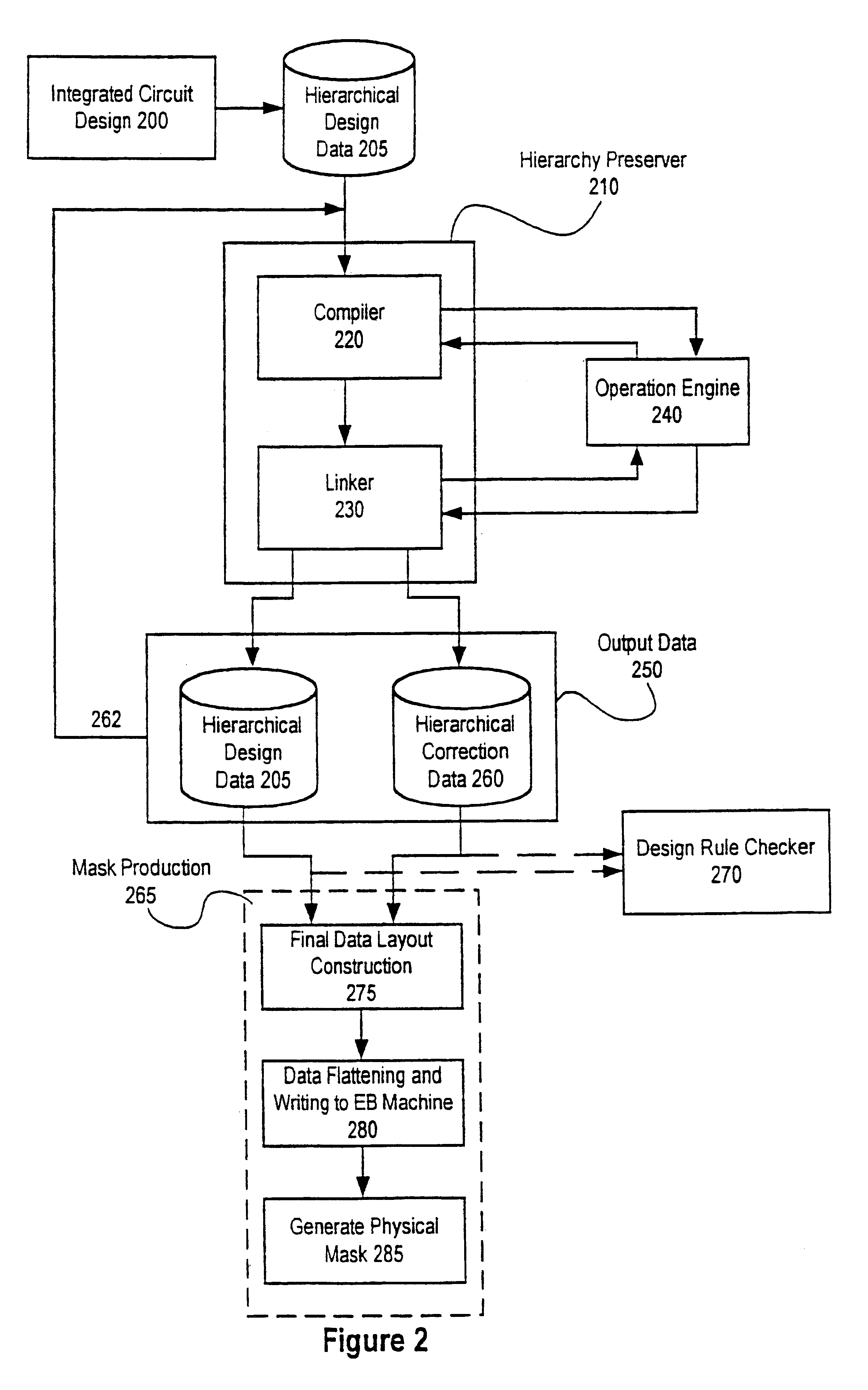Design rule checking system and method
- Summary
- Abstract
- Description
- Claims
- Application Information
AI Technical Summary
Benefits of technology
Problems solved by technology
Method used
Image
Examples
Embodiment Construction
Before describing the details associated with design rule checking, a description of how the hierarchy in the designs is maintained is while different types of corrections and checking is performed. Then, a description of how simplified design rule checking is performed is described.
a. Maintenance of Hierarchy in Designs
As described above, in the manufacture of photolithography masks, it is advantageous to flatten the data representing the IC design at the latest point in the actual manufacture of the masks. However, this flattening takes place earlier than desired in some instances. This is because the original layout for a complicated IC is typically manipulated after the original design is completed in order to perform one of a number of operations on the design. These operations include the performance of logical operations, the generation of optical proximity corrections, the generation of phase shifting masks, and the design rule checking of masks that have undergone these ope...
PUM
 Login to View More
Login to View More Abstract
Description
Claims
Application Information
 Login to View More
Login to View More - R&D
- Intellectual Property
- Life Sciences
- Materials
- Tech Scout
- Unparalleled Data Quality
- Higher Quality Content
- 60% Fewer Hallucinations
Browse by: Latest US Patents, China's latest patents, Technical Efficacy Thesaurus, Application Domain, Technology Topic, Popular Technical Reports.
© 2025 PatSnap. All rights reserved.Legal|Privacy policy|Modern Slavery Act Transparency Statement|Sitemap|About US| Contact US: help@patsnap.com



